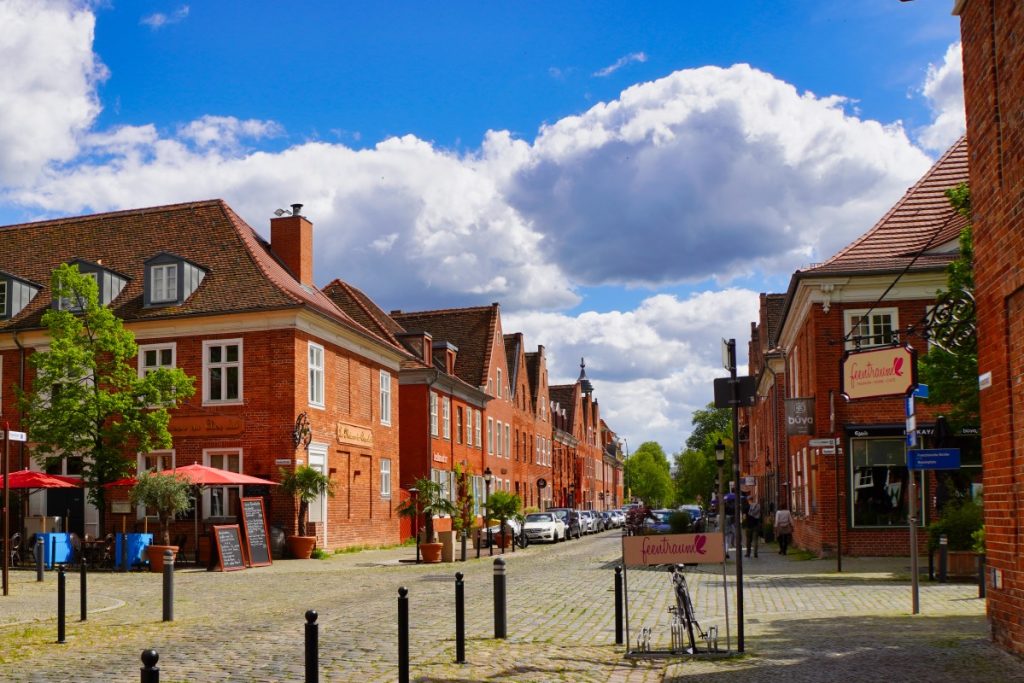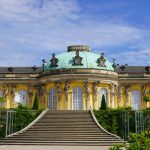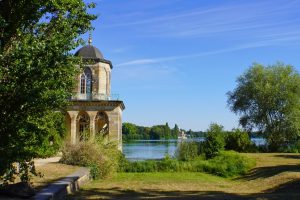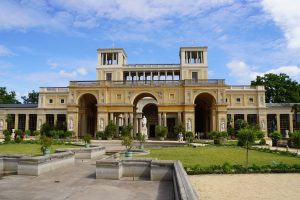If you walk through Potsdam, you will always see signs pointing to the Dutch Quarter. How is it that a district in the middle of Brandenburg was named after Holland?
The background
It is well known that Frederick William I showed an enthusiasm for Dutch culture. Even as crown prince, he was drawn to educational trips to The Hague and Amsterdam. There he discovered not only the architecture, but also the advantages of the progressive economic state system.

Even if it is not always apparent at first glance, his impressions from Holland quickly made an impact in the city. For example, all the churches that Frederick William I had built in the city have a Dutch influence. The famously quite frugal ruler had only one new building constructed for himself during his reign. The Stern hunting lodge resembles a plain Dutch burgher house. It is assumed that a Dutch master builder was commissioned by Frederick William I to build it.
Start of construction: Dutch Quarter in Potsdam
Between 1733 and 1742, Potsdam already needed a second city expansion. This was to be built on a rather marshy terrain. For such a project, it was not surprising that Frederick William I relied on the experience of a Dutch master builder. He brought Jan Bouman from Amsterdam to Potsdam.
The work began with the excavation of a basin. Here, the run-off water was collected and from there it was directed into the holy lake. After the land had been drained to some extent, a pile grid was founded from countless tree trunks. The piles are driven into the ground either individually or arranged in groups. In this way, they were supposed to transfer the loads of the later structures into the ground. A stone foundation was placed on the piles. Blocks with a height of 1.30 meters and a width of 1.25 meters were used. In addition, the site was backfilled by about one meter and pumping stations were installed to artificially lower the groundwater level during the subsequent work.
A new residential area is created
In total, a new neighborhood with 134 brick houses was created. A street intersection (Mittel- and Benkertstraße) divides the residential area into four circles. During the reign of Frederick William I, two construction phases were completed, and later Frederick II had the other two blocks completed largely according to his father’s plans. In addition, he had other houses built in the same architectural style (e.g. on the front side facing the Bassinplatz and behind the French Church), but these do not actually belong to the actual Dutch Quarter.

With its completion, it was hoped to attract Dutch craftsmen to Potsdam. They were to feel at home in houses that reminded them of their homeland. Since not enough Dutch people took up the offer, French and Prussian trade representatives, artists and even soldiers moved into the new houses.
What distinguishes the houses in Dutch Quarter?
Walking down the streets of the neighborhood, you will notice two different types of houses, gabled houses and eaves houses.
The gabled houses are two-storeyed. To the right and left of the entrance there are window axes. The houses are smaller than the eaves houses, the living space is about half the size.
The eaves houses are divided into row houses and detached houses. The detached houses are very representative. They have two floors and the facade is divided into 5 axes with an entrance in the middle. The entrance is decorated in a typical Dutch way with a wooden baroque portal decoration.

What is striking in contrast to the often richly decorated gables of the houses in Holland is that in Potsdam there are only two gable forms. These were rather functional and sparsely designed, which probably corresponded to Frederick William I’s taste. Actually, they are more similar to the design of Dutch warehouses.
All houses have white painted window frames, which divides the window into small squares. I especially like the shutters, which are painted in green and white.
Walk through the Dutch Quarter in Potsdam
For us, the walk through the Dutch Quarter is always something very special. Admittedly, in the meantime, the view no longer falls quite so often on the really beautiful houses. We look more into the many small stores and galleries, some of which offer really beautiful and sometimes unusual goods. Even if the neighborhood is a tourist attraction, the small stores are not full of “tourist kitsch”.
Small cafes, pubs and restaurants, especially in summer, with their small tables on the sidewalk, tempt us to take a break. We are too happy to take a break in a small cheesecake café and enjoy the cake.

Every year in April there is a tulip festival in the Dutch Quarter of Potsdam. In September you can stroll through a pottery market here and at Christmas time the street is festively decorated and there is also a Christmas market.
Film fans will stop at one point or another. For example, scenes from the series Homeland (in which you were actually in Amsterdam) played here.
















Leave a Reply